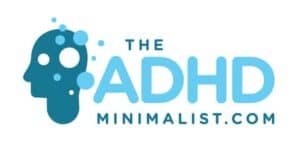
My son who has ADHD (hyper) struggles with perseveration daily, while my daughter who has ADD (ADHD inattentive) only needs help occasionally to break a cycle of perseveration.
Perseveration is often associated with but not limited to autism.
Perseveration is the official name for ‘Getting Stuck’ on an idea, behavior, or response. Kids that perseverate often seem to be stuck in a loop. When you try to redirect them or change their behavior and they continually loop back to their automated response.
It’s like someone keeps hitting repeat!
Kids who struggle with perseveration are not trying to be excessively stubborn or trying to ignore requests to change their behavior on purpose.
It helps to remember that the child is not putting his foot down and purposely deciding ‘I will NOT stop!’ In fact, it’s quite the opposite the child Does NOT know HOW to STOP, or the child may not even realize that he is stuck!

Often these kids have a diagnosis or a combination of diagnoses. Common diagnoses and disorders associated with perseveration are:
- Autism
- Sensory processing disorders
- ADHD Hyper
- ADHD inattentive
- ADHD combined type
Having a diagnosis often means that the child is already struggling with a plethora of issues and perseveration may be a sign of over-stimulation. A child may have some of the symptoms below:
- The child already has trouble processing information
- He/she may not be able to shift their attention
- He/she can get ‘STUCK’ on specific emotions
- They may have very slow processing speed
- The child may be unable to understand social cues
- He/she may be in a hyperfocused zone where you can not easily reach them.
Our struggle with Perseveration
My son (Lage) is almost 14 and he still struggles with perseveration although it’s not as severe as it was when he was ten.
On a typical day in grade school, Lage would think of something he wanted to do when he got home, and as soon as he stepped through the door he would tell me he wanted to build something with daddy, cut down trees in the forest, or go eat at a restaurant!
These were not options that were feasible at 14:15 when he got off the bus! My husband was often not home from work yet, and Lage had two small sisters who also needed my attention.
The problem was that he couldn’t let go of his idea! He couldn’t stop talking about whatever it was that he planned to do that day. The fact that he couldn’t execute his plan stressed him out!
He would pace back and forth and talk incessantly about it or try to call my husband at work over and over again! Often my husband had to turn the sound off on his phone to get any work done!
Lage could be in this loop for several hours! My husband would come home to find me in the kitchen desperately trying to get supper on the table, while Lage was interrupting me, getting in my face, and repeatedly telling me about what he wanted to do that day!
On days when nothing seemed to help him stop perseverating, I often became a frazzled mess! On these days he could go on and on for up to 3 hours and nothing I did seemed to help!
I wish I knew that humor could help break this cycle, way back when it first became a problem!
Annie
I was reminded of the struggles we had with our son yesterday when my daughter became extremely ‘STUCK’ while we were eating dinner.
The doctor wanted her to try a gluten-free diet for several weeks to see if this would help her tummy aches. The problem was that when I bought gluten-free food I forgot to buy gluten-free hamburger bread.
She refused to eat her hamburger with other gluten-free white bread and I didn’t feel that giving her regular bead would help her long-term.
We seemed to be at an impasse! She Became frustrated and refused to eat anything we had at the table!
I tried making all kinds of suggestions and she kept repeating that she wouldn’t eat her hamburger without real hamburger bread! Even though she was hungry she refused to eat!
Finally, someone at the table did something funny. I don’t even remember what started it, but suddenly my husband was trying not to laugh!
My daughter looked at him, and you could see that she was trying not to laugh!
She kept saying ‘’No daddy! Don’t laugh, daddy it’s contagious and I don’t want to laugh!”
She was still upset and didn’t want to let go of her fixed idea, but my youngest started laughing across the table and finally, I started cracking up looking at everyone trying not to laugh!
In the end, everyone was laughing, and my daughter was able to move on! She finally quit laughing and asked for a hotdog (which we already had on the table) instead of a hamburger and the problem was solved!

Other ways to break a cycle of perseveration:
- Jennifer Kolari’s C.A.L.M. technique helped us sometimes. You can find a video about that in the menu under Our favorite resources for ADHD!
- Sometimes it helped for me to almost ignore Lage and become a cloud! I tried not to take in too much of what he said while repeating calming phrases like maybe we can schedule that activity next week over and over again.
- Being empathetic towards the child helps this is very counterintuitive.
- Limbic bonding directly after an episode of perseveration will strengthen your connections with your child and this can help long-term. Limbic bonding helped our son gradually break behavior patterns over the course of about six months. You can read about this here How Limbic Bonding Transforms ADHD Children
- Talk to your child about perseveration when they are not doing it. Ask them what happened and explain why their behavior wasn’t ok.
Your child may need this explained several times especially if they are forgetful or struggle with social cues. Half the battle may be to help your child understand that they were basically on repeat! If they can accept they were behaving in that way they are often more open to change.
Lage had a hard time understanding how he was behaving after the fact.
- Teach your child self-monitoring.
“Self-Monitoring is the process of having individuals record data regarding their own behavior for the purpose of changing its rate” (Coleman& Webber, 2002, p.103)
Often children who have diagnoses need parents and teachers to help him/her by asking questions. Questions like is your behavior helping you? When you do such and such does it cause problems with other people? Does your behavior help you achieve your goal?
- Talk to your child about where the socially acceptable stopping point is for his/her behavior. Often you will need to talk about this after your child has calmed down.
- Make a secrete signal that only you and your child know means ‘STUCK!’ Recognizing this signal can help your child make a mind-shift!
- When your child is calm ask them what can help them get unstuck. Listen to them and try their ideas! The book The Explosive Child has some good ideas for making a plan with your child. Read the book review here The Explosive Child
- Humor became my favorite way to break this repetitive cycle! You will need to be able to ‘Bjuda på dig själv’ as they say in Swedish which basically means allowing others to have a laugh at your expense!
The other day my youngest didn’t want to go to school. She knew she needed to go, but she was dragging her feet! I finally realized that if I could get her mind off of her repeating thought pattern that she didn’t want to go to school she might speed up!
I started telling her a story, ‘’Frida, I am sorry that I smell bad. You must think I stink while I help you get dressed! Do you know what happened Yesterday?
Maria took a bath, you took a bath, Daddy showered, and even Lage got a shower and you know what happened when I tried to shower? We ran out of hot water! So, When I woke up this morning I was more smelly and stinky than I have been in a long time!’’ At this point, she was laughing and cooperating!
I am not giving medical advice, just sharing tips that helped our family. I hope that this will make life easier for your family.
Check out Our Favorite Resources Page before you go!
Some other blog posts that are on similar topics
How Limbic Bonding Transforms ADHD Children
What every teacher should know about the ADHD child

